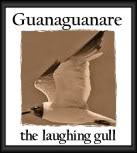Excerpts: 1 | 2 | 3 | 4 | 5 | 6 | 7 | 8
TITLEA Sketch of Trinidad: The Canadian Mission and the opening of Presbyterian College in San Fernando, Trinidad by Alice Clark. Ottawa: Hope and Company, Stationers and Printers, 1892.
Previous
SAN FERNANDO.
The railway follows the model of the British carriages in the old country. On our ‘route, we passed through large plantations of sugar cane, almost ready to be cut down. The soil is remarkably fertile; coffee
Page 12
is cultivated to some extent, besides tobacco, corn, cocoanuts, and cacao. The train reached San Fernando at 1 p.m., a distance of 37 miles. We received a right hearty welcome from our friends, Rev. K. J. Grant, and son, Mr. Geddes Grant, waiting our arrival at the station. We were quickly driven through the business town of San Fernando, and were soon at his unique and comfortable “Manse”, where we were warmly received by Mrs. Grant and their daughter, Claudia, about 13 years of age. A son and daughter were absent from home, attending College in Nova Scotia. For information, I may state here, that in October, 1870, the Rev. K.J. Grant and his family were sent from Nova Scotia, by the Presbyterian Church, as Missionaries to the Hindus in Trinidad. The Rev. Dr. Morton having preceded him in the Mission about two years, and was labouring in the Iëre section. In the course of a year, after Mr. Grant came, the Rev. J. Morton wished to reside in San Fernando, on account of the indisposition of Mrs. Morton; and while carrying on special work in Iere, co-operated with Mr. Grant in San Fernando; and such were the advances made, that in less than two years, the Susamachar church (which signifies the Good News, or the Church of the Gospel) was erected in San Fernando. The East Indians themselves, composed of Mahommedans and worshipers of Idols, for then there were few Christians, contributed about £150 sterling. This work has, by the blessing of God, so increased under the indefatigable labors of Rev. K. J. Grant and his native converts for the past 20 years, that the membership of the church, at this date, is nearly 300; the number baptized in the name of the triune God, is nearly 1500, and the amount raised in this section for religi
Page 13
ous purposes, supporting the pastor, and repairing the church, school-houses, etc., for the year 1891 just closed, was $1,8OO. The bell in the Susamachar church was presented by the late Mr. Turnbull, of Scotland, who formerly resided in Trinidad, and had a large sugar estate. The church is capable of containing four hundred people. It has a neat tower on each of the front corners, and a gothic entrance, over which is printed “The church of the living God,” in Hindi characters, on the glass window, over the church door; the whole structure a gem of neatness, and with thorough ventilation, a great necessity in this warm climate. The church is on an elevated site, with a number of concrete steps, leading down to Coffee Street. The handsome iron gate and columns at the main entrance, on this Street, were the gift of one of Mr. Grant’s East Indian young men, who having been started in life by him, in giving him useful knowledge, took this means of showing his gratitude to one to whom he owed so much. One-third of the population of Trinidad are East Indian emigrants, about 70,000, brought thither by the Government, and indentured to the planters of the sugar and cacao estates, for a term of five years. They are the chief labourers, having been found to work at a much cheaper rate than the negroes. These labourers are colloquially termed coolies, while they are in the service of the planters, though this term “coolie” is not relished by the East Indians themselves. To these our dear Missionaries were sent, to unfold unto them the love of Jesus and the way of Salvation through Him. The “Manse” is situated about forty feet from the church; it is built of concrete, is very neat and suitable for a tropical climate, the object being to keep out the sun and let
Page 14
in the wind. Venetian jalousies are placed in the sides of the windows, instead of glass, which can be closed or opened at pleasure. The rooms look so cool, with light polished wood floors, little or no carpets in the bedrooms, and contrivances of all kinds to keep the air in continual circulation. We would not the heat so much, if the artful mosquitoes would allow us an hour or two, to pen our thoughts to paper. We are protected from them all night by a mosquito netting round the bed, and I wish I could sit under the same while I write. We had been warned to look out for scorpions, centipedes, jiggers, and other things. Of these I met with none, but the mosquito of Trinidad is enough by himself. The air is warmer than we ever feel it, in the extreme heat of a Canadian summer; yet pure and delicious, and filled with the perfume of many flowers. Near the “Manse” and church, is the new college building, in Shady Grove, recently erected for the training of the Hindus, to preach the Gospel to their own countrymen in Trinidad. It is a commodious building, built of wood of the best quality. It is raised some four feet from the ground, is supported by concrete pillars. There are entrances at the front and rear, and on one side, with steps of the same material. It is oriental in style, with ornate eaves, or” hoods”, which improves the appearance of the building, and protects those within its walls from the hot rays of the tropical sun. With the exception of one or two glass windows, the doors and windows are largely of jalousie lattice, and other open work. The large room is divided off, for, the classes, with cedar screens of lattice work. The roofs of all these buildings are galvanized iron. The funds for this college were mostly raised by gift of generous donors in Ontario,
Page 15
by collections and donations in the Lower Provinces, and special mention ought to be made of the generous donations from the Woman’s Foreign Missionary Society of the Eastern Division. Then, beyond the college is a house, which was on the ground when it was bought, but is being enlarged and renovated, to be a home for the resident professor, and for the students, who shall attend this Institution. At the rear of the “Manse” and church, is the house of the native assistant, Rev. Lal-Bihari, and family, and the school-house for Hindi children, who are taught by an efficient lady teacher, Miss Kirkpatrick, from Nova Scotia, aided by four or five assistants. This school is noted for the excellent instruction it has given since its organization. All these buildings are together in one compound, but I must not forget to add the pretty little “Cedar Cottage” that in the early days of the Mission, was the manse, and it is now occupied by Mrs. Merriman, the granddaughter of the late Dr.McCulloch, who is now visiting Trinidad for her health. Many a pleasant gathering have we had in her parlor, with Mrs. Grant’s young womans’ sewing class, such as sewing garments for the mission under her superintedance. Mrs. Grant has evidently done her duty, in preparing these East Indian girls for usefulness, as the wives of teachers, or of young men in good situations, or in whatever position God may cast their lot. We visited a number of them in their pleasant homes, and heard the children play and sing very nicely. Natural kindliness, heartfelt desire to please, seem characteristic of all the East Indian people. What kindly inventiveness is displayed in contriving surprises for one, or in finding some rare flower to show you, or some queer spider or insect, a scorpion or a centipede held up to
Page 16
view, on the end of the tongs, which was quite near enough. The large grounds round the manse and college, are shaded and adorned by cocoanut palms, bread-fruit trees, tamarind, orange, citron, malacca apple, ground-nut, sour-sop, bananas, sapodilla, and many others I cannot call by name. Plants and flowers, with which one is familiar in conservatories, are here expanded into forest giants, as the cactus hedge, and the double hibiscus, crimson, the single pink and fawn colour; each cluster of double flowers is from twelve to fourteen inches round.
Previous<--->Next: THE FIRST SABBATH IN TRINIDAD
Excerpts: 1 | 2 | 3 | 4 | 5 | 6 | 7 | 8
A Sketch Of Trinidad - Excerpt 2
Subscribe to:
Post Comments (Atom)












0 comments:
Post a Comment